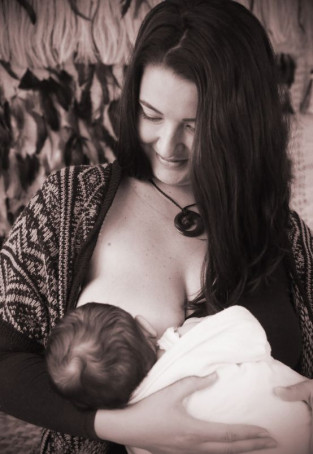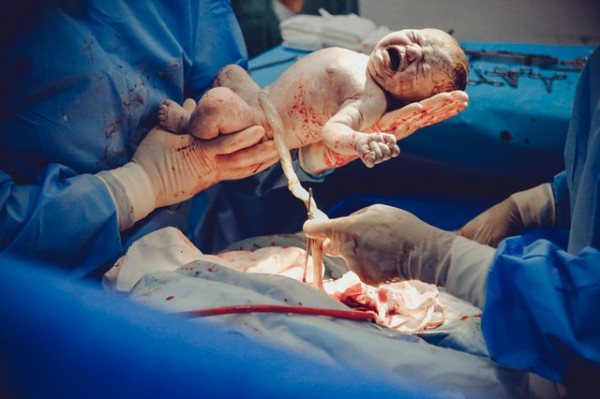Your breasts
Whether or not you’re breastfeeding, your breasts will start feeling full and heavier on or around the third day after you give birth.
Your nipples may be tender or sore as you learn how to breastfeed your baby and they learn how to latch on to your nipple. If you’re having issues with breastfeeding, see our Breastfeeding: problems and solutions page.
And it’s completely normal for breasts to leak milk, especially in the first few weeks after giving birth. There’s no way to stop the leakage, but you might find breast pads (or muslin cut into squares) helpful. You may also find that it slows down if you breastfeed more frequently.

Your tummy
Tummy pains and cramps
Your uterus starts contracting back to its pre-pregnancy size after your baby is born. It’s normal to feel period-type pains, or quite painful twinges or tummy cramps. This is especially common if it’s not your first baby.
Breastfeeding also makes the uterus contract, so you may get tummy pain while you’re feeding.
A full bladder makes the pain worse, so try to wee regularly, and make sure you wee before breastfeeding.
Changes to your tummy
You may feel swollen, or think you still look pregnant after you’ve given birth. This is normal - it takes a while for your uterus to contract back to its normal size. Breastfeeding helps the uterus to contract too.
Your stomach muscles and the skin on your tummy will likely be quite loose after the birth too. Pregnancy stretches the abdominal muscles and the skin, and often leaves stretchmarks and some excess skin. The stretchmarks will fade, and stomach muscle tone will improve with time and exercise.
Once you’ve recovered from the birth, you can start doing some gentle exercise to help tighten up your tummy muscles. If your abdominal muscles separated during pregnancy, seek advice from a women’s health physio on safe exercise.
After a cesarean section
A cesarean delivery — also known as a c-section or cesarean section — is the surgical delivery of a baby. It involves one incision in the mother’s abdomen and another in the uterus. You'll feel sore after a caesarean section, and you'll be given pain relief in hospital.
You'll usually have a catheter fitted (a small tube that fits into your bladder so you don't need to get up to wee) for up to 24 hours.
When you’re discharged from hospital, you’ll be given pain relief and instructions about the recovery process. It takes up to six weeks for your incision to heal, so there'll be restrictions what you can do.

Your vagina (vaginal delivery)
Vaginal bleeding
It’s totally normal to bleed after the birth, and it may be heavy at first.
- Bleeding might last for six weeks or longer, eventually becoming a brownish colour and getting less and less heavy until it stops.
- Use sanitary pads rather than tampons, because tampons can cause infections. Your midwife will let you know when it’s safe to use tampons again.
- If you're finding large clots of blood, or if it changes to a bright red colour or is smelly, talk to your midwife or doctor.
Sore vagina
It's normal to have swelling, pain, or tenderness around the vagina after the birth. If you've had stitches because of tearing or an episiotomy (a surgical cut to enlarge the vaginal opening) during the birth, the pain will be worse. To ease the pain, you could try:
- an ice pack, or icecubes wrapped in a wet washcloth
- soaking a large sanitary pad in water, freezing it, and securing the frozen pad in your underpants
- taking Paracetamol as directed.
If you do have stitches, use clean warm water to bathe the area often, and dry yourself carefully and gently. Sitting can be uncomfortable - try lying on your side.
Let your midwife or doctor know if your stitches are sore.
Going to the toilet
Going to the toilet may burn, sting or hurt after you've had a vaginal birth because the area around your vagina stretches or tears during delivery. If you've had an episiotomy, you'll have stitches too.
Weeing
Diluting your wee may help ease the sting. You can do this by:
- drinking lots of water
- gently squirting water on your vagina when you’re weeing.
If the stinging lasts for more than a few days, tell your midwife (or specialist doctor).
Pooing
Drink plenty of water, and eat lots of fresh fruit, vegetables, bran and wholemeal bread to avoid constipation after birth. You should start to poo again a couple of days after birth.
To help your first bowel motion after birth, hold a pillow to your stomach (useful if you have stitches), and:
- sit on the toilet with your feet on a small step stool so your knees are higher than your belly button
- lean gently forward and put your elbows on your knees
- relax and bulge out your stomach
- straighten your spine.
This is the natural position for your organs and muscles to align so you shouldn’t have to strain.
Your bladder and pelvic floor
It's common to wet your pants a bit if you sneeze or cough after you've given birth vaginally. The pelvic floor muscles that support your bladder, uterus and bowel stretch 2.5 times their resting length during a vaginal birth, and more stretch is caused by a forceps birth, suction or pushing for a long time.
You can work on strengthening your pelvic floor muscles when you’re sitting on the couch, lying down, or standing at a desk and no one will ever know.
- Squeeze and tighten your back passage (imagine you’re stopping a fart)
- Squeeze and tighten your vagina like you’re holding a tampon
- Squeeze and tighten your bladder as if you’re stopping the flow of wee
- Hold the squeeze for a few seconds – you might only be able to do it for a couple of seconds until your muscles get stronger again. Later, try to count to 10
- Relax and then repeat about five times
- Try to do this several times a day
- Keep breathing while you do these exercises. If you pull in your stomach or squeeze your bottom when you squeeze, you'll be using the wrong muscles!
Avoid doing pelvic floor exercises when you’re actually having a wee, as it might stop you from properly emptying your bladder.
If you keep having problems, talk to your midwife, Plunket nurse, or see a pelvic floor physiotherapist.
Your back
Your back will be weaker than it was before pregnancy, so take it easy and avoid heavy lifting.
It’s easy to hurt your back when you’re lifting, especially in the first three months after the birth of your baby. Try to always lift by bending your knees instead of your back.
Swollen legs
Your legs and feet are likely to swell after the birth, and your hands may swell too. This is fluid your body stored during pregnancy, and it’ll gradually go away over about a week after you give birth. Weeing helps get rid of the fluid.
If the swelling doesn’t go away after a week or so, or if you have headaches or pain in your legs, talk to your midwife.
If the swelling is only in one leg or ankle, and your calf is tender or sore, see your midwife or doctor straight away – this could be a sign of a blood clot.